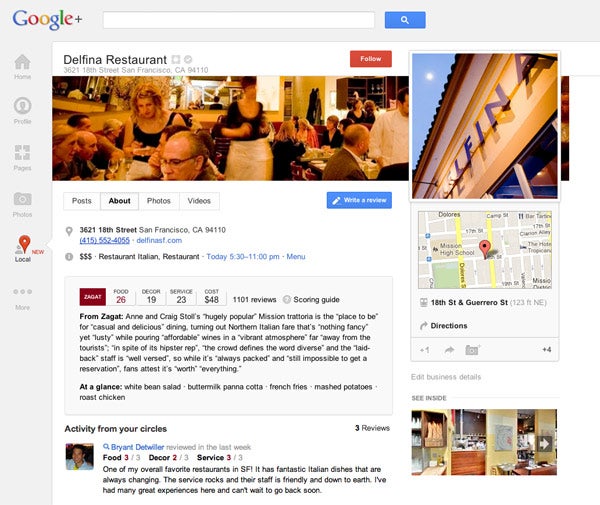By Paul Bloom
For a social entrepreneur with an innovative solution, the holy grail is
scaling it—that
is, taking it to a level where the new approach operates efficiently
and effectively to achieve significant mitigation of a social problem.
Indeed, many are under real pressure to scale as their supporters, not
unlike investors in commercial ventures, clamor for higher social
returns on their investments. But for every
Habitat for Humanity,
Mothers Against Drunk Driving, and
Teach for America that has managed to scale, there are thousands that have stagnated or failed.
For the past several years, I have been studying the successful
scalers to discover how they made the leap from local to large-scale
impact. The answer isn't as simple as we might wish: their leaders have
pursued a variety of strategies, and there is no single "best practice"
formula for scaling a social venture. But the good news is that there
are common elements—seven organizational capabilities that can be
developed and combined in different ways to take a promising innovation
to the next level. They are:
Staffing. It's hard to take a venture to the next level
without knowing how to recruit, train, and retain talented people.
Perhaps more than anything else, this has been the key to
PlayWorks' successful
scaling. It has figured out how to keep growing a staff of great
"coaches" to supervise and manage recess in schools all over the USA.
Communicating. Susan G. Komen for the Cure has
excelled here, getting the word out about breast cancer and persuading
hundreds of thousands to support its work combatting it.
Alliance-Building. A great way to grow impact without a
large organization is to partner with other entities such as community
groups, governments, and corporations.
KaBoom does this to build playgrounds in needy neighborhoods.
Lobbying. Here, a model is the
Campaign for Tobacco-Free Kids,
which has accomplished much by persuading legislatures, judges, and
regulatory authorities to make tobacco products harder and more
expensive for young people to acquire.
Earnings Generation. Increasing numbers of social programs
grow with revenue generated by their own operations. Examples include
the social enterprises in the "portfolio" of
REDF (Roberts
Enterprise Development Fund), which helps nonprofits create viable
businesses (in food-service, property-maintenance, extermination,
recycling, and other areas) to provide jobs to disadvantaged workers.
Replicating. Aflatoun has
scaled its impact by making it easy for others to copy what it does,
providing access to the curriculum materials it has developed for
teaching children financial skills to franchise partners all over the
world.
Stimulating Market Forces. The textbook example on this front is
Fair Trade USA,
which by creating a certification system for "fair trade" goods (that
is, sustainably produced commodities like coffee, chocolate, bananas
whose growers are not exploited by middlemen) gives consumers market
information they previously lacked.
Does a venture need to have all seven of these SCALERS capabilities
in place to have major impact? It seems safe to say that, in any scaling
effort, improving at least most of them should be a goal. A given
venture's "scaling strategy," however, can be thought of as the
particular emphasis it puts on each of these capabilities relative to
the others. And how does a given organization get that strategic balance
right? It's a matter of careful thinking about the implications of the
venture's
theory of change and the
ecosystem in which it operates.
Before even attempting to scale, the organization should be able to
articulate and justify its theory of change—the logic model that shows
how its innovation (whether it's a new product, new service, new way of
harnessing human resources, new financing approach, new distribution
method, or new legal or policy approach) contributes to mitigation of a
social problem. If the innovation is a new pedagogical technique, it
must be evident how it leads to lower drop-out rates, for example. If it
is a new way to encourage childhood vaccinations, the innovator must
show how it improves public health.
With the pathway to better outcomes clearly laid out, the next
requirement is for the organization to study its ecosystem to understand
how other resource providers, allies and rivals, forces and trends
could affect its success. Depending on the "capital" (which can be
financial, human, social, political, technological, or natural-resource
capital) that others bring to the table, the organization can adjust the
emphasis it places on building its own capabilities. Of course,
ecosystems evolve, especially as economic climates and cultural norms
shift, so this cannot be a one-time exercise.
A scaling strategy, in short, is a plan for creating a special blend
of capabilities that fit well with an organization's theory of change
and its surrounding ecosystem. Most social entrepreneurs want to
maximize their ROI, even though the "social returns" they seek have more
to do with jobs created, lives saved, or cleaner water. A
well-thought-out scaling strategy is the best assurance —not only to
them but to their many stakeholders —that they have the potential to
make a real difference in the world.
 As a Christian business owner I have to ask myself how far out in front of my business card do I want to dangle my Christianity. There are a handful of questions that come to mind... Will wearing my faith on my sleeve turn a certain percentage of potential clients off? Do we care? Do I expose myself to extra criticism when we make a mistake? Which we inevitably will. Will we gain an advantage with Christian clients simply because we are like minded? Do we care? Morals and ethics aside, doesanything change during working hours as opposed to personal hours? Do we dumb it down between 9 am and 5 pm?
As a Christian business owner I have to ask myself how far out in front of my business card do I want to dangle my Christianity. There are a handful of questions that come to mind... Will wearing my faith on my sleeve turn a certain percentage of potential clients off? Do we care? Do I expose myself to extra criticism when we make a mistake? Which we inevitably will. Will we gain an advantage with Christian clients simply because we are like minded? Do we care? Morals and ethics aside, doesanything change during working hours as opposed to personal hours? Do we dumb it down between 9 am and 5 pm? Since
going public in what may be remembered as one of biggest IPO disasters
ever, Facebook has come under fire as industry observers question the
efficacy of its ad offerings.
Since
going public in what may be remembered as one of biggest IPO disasters
ever, Facebook has come under fire as industry observers question the
efficacy of its ad offerings.











